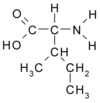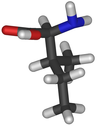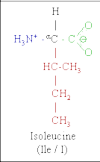When it comes to protein powders, whey used to get top honors. However, as the research mounts, it's becoming clear that casein and even soy provide benefits not offered by whey. So what's a growing bodybuilder to do when it comes to buying a protein powder? Do you go with whey, casein or soy? Take them all. That's right--your best bet to optimize growth is to use all three.
Whey: Whey protein is the soluble fraction of milk protein (it makes up about 20%). It contains the highest concentration of branched-chain amino acids (BCAAs--leucine, isoleucine and valine) among protein powders, which is one reason it so effectively stimulates muscle growth. The other reason: It's a fast-digesting protein, meaning it quickly delivers its critical amino acids to muscles when they need them most. That's why we recommend taking a whey protein supplement before and after workouts.
Casein: Casein is the major fraction of milk protein (about 80%). It contains the highest concentration of glutamine and is the slowest-digesting protein powder, which is why some shy away from it. Casein can take up to seven hours to digest because it clots in the stomach, making it harder for enzymes to break down. In turn, this lengthy breakdown allows casein to slowly and steadily release its aminos to muscle cells. Research shows that even though casein is digested more slowly than whey, it appears to enhance muscle growth to the same extent when taken immediately after workouts.
Soy: Soy protein comes from, well, soybeans. Soy contains the best ratio of the critical aminos glutamine, arginine and the BCAAs. Plus, it digests quickly like whey. If you're worried that its estrogenlike isoflavones may raise your estrogen levels and lower testosterone, you can relax. New research shows that soy protein doesn't alter levels of estrogen and testosterone, and it promotes muscle growth just as well as whey does.
BY JIM STOPPANI, PHD
RELATED ARTICLE: PRO STACK
Taking a mix of all three proteins can give you the best insurance that you're getting the protein you need to maximize muscle mass. Look for a protein powder that offers a combination of all three, such as Probolic SR by MHP.
REFERENCES
Kalman, D., et al. A randomized double-blind clinical pilot trial evaluating the effect of protein source when combined with resistance training on body composition and sex hormones in adult males. Experimental Biology, San Diego, 2005.
Tipton K.D., et al. Ingestion of casein and whey proteins result in muscle anabolism after resistance exercise. Medicine and Science in Sports and Exercise 36(12):2,073-2,081, 2004.
COPYRIGHT 2005 Weider Publications
COPYRIGHT 2005 Gale Group




